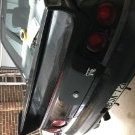FS: R33 GTR (modded)
Announcements
-
Similar Content
-
Latest Posts
-
100% Also "Not wanting to spend money" is THE WORST IDEA IMAGINABLE when coming to a project car of any kind. They EXIST to BURN MONEY. Sure, gas money is a thing. A stock car with the worst fuel economy ever sold would probably be cheaper than modifying a car with FREE petrol for the life of your ownership of it, lol.
-
Amount of time you're being observed by law enforcement is so minute, that you could be a dumb shit 90% of your driving time, and never lose a demerit. You could also be the best driver ever and still get hit with a fine. When you realise how quickly everything turns from "Wee, we're having fun!" To "oh f**k oh f**k oh f**k", you start to realise the only way to be a good driver, is to not be doing anything dumb or unexpected by normies on the road. You want to go fast, go to the track. Someone there in a 1990s slow POS will also show you how bad of a driver you are as they lap 10 seconds per lap quicker than you can in a car that should be considerably faster.
-
This is a stupid reason to get a car. I thought someone mentioned something about not trying to be pretentious... Flexing is same same, you just think you're cool doing it.
-
Yeah lol. But I think im a good driver (I hope I am) haven't gotten a single demerit point yet
-
By Dose Pipe Sutututu · Posted
Wait till you own a 90s JDM shit box I can too, you often hear / see of kids borrowing their dad (or mum)'s fast car and binning it.
-









Recommended Posts
Create an account or sign in to comment
You need to be a member in order to leave a comment
Create an account
Sign up for a new account in our community. It's easy!
Register a new accountSign in
Already have an account? Sign in here.
Sign In Now